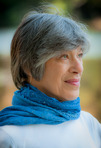Marilyn Oser's Blog, page 9
June 5, 2013
Ten Things You Need to Know About… Yehiel Michal Pines
Writer and early proponent of religious Zionism
1. Pines was born in 1843 in Ruzhany in what is now Byelorussia. The family were prosperous merchants and Torah scholars. As a child, he studied both traditional Jewish subjects and foreign languages and science – a broad curriculum for his time and place.
2. Perhaps as a result of his education, he believed that Jewish life could be reformed without destroying the sanctity of religious belief and practice. These ideas were both influenced and expanded upon by Ahad Ha’am [see my post of April 24].
2. In 1877, at the age of 34, he was asked to serve in Palestine as a representative of the London-based Moses Montefiore Testimonial Fund. He arrived in Jerusalem in 1878.
3. After looking into the spiritual, cultural and economic life of the Jews in Palestine, he advocated building an agricultural settlement, laying out new quarters for Jews in Jerusalem, and creating a variety of artisanal and industrial projects.
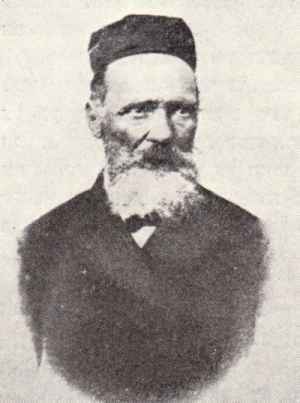 4. The neighborhoods of Mizkeret Moshe, Ohel Moshe, Yemin Moshe and Zichron Moshe, all in Jerusalem, were established as a result of his efforts.
4. The neighborhoods of Mizkeret Moshe, Ohel Moshe, Yemin Moshe and Zichron Moshe, all in Jerusalem, were established as a result of his efforts.
5. A political conservative, he wrote articles and pamphlets that were later to be adopted by the emerging Mizrachi party.
6. He became friends with Eliezer Ben-Yehuda [see my post of February 6] when Ben-Yehuda made aliyah, and they worked together on the revival of Hebrew as the spoken language of the Jews in Palestine.
7. He worked with young Russians to establish the settlement of Gederah and was its first patron. He continued trying to further the development there of artisans, craftsmen and smiths.
8. He was once asked, “A person such as yourself, with such great knowledge in Torah and science, with such linguistic creativity, with talent, with style and with such writing where every word is a stone – a person such as you – why are you involved with the institutes of Jerusalem? How many good books could you have given us?” He answered, “Who told you that one must write books and not forge institutions? Is not the founding of Gedera more important than the best book? We have 20,000 books that were written by people greater and better than us, and if a few more were added by Michal Pines, what difference would it make? But a moshav – an institution – how many do we have? Are we short on books? If moshavs are founded – this I understand.”
9. One tale told about him is that he sold his wife’s jewelry to secure the renewal of Petach Tikveh after the settlement was destroyed.
10. He died in 1913. Kefar Pines, a moshav in the Sharon Plain, was named for him twenty years later.
You’ll find Pines Street in the Neve Tzedek area of Tel Aviv. Note: in Hebrew, Pines is not pronounced like the tree. Which is, of course, why I’m writing about Pines (yes, I’m about twelve years old).








May 29, 2013
10 Things You Need to Know About… Abraham Menachem Mendel Ussishkin
Zionist, Head of the Jewish National Fund
1. Menachem Ussishkin was born in Dubrovno in the district of Mogilev, now in Belarus, in August, 1863. The family moved to Moscow in 1871, and he graduated as a technical engineer from Moscow Technical Institute in 1889.
2. While in school he was among the founders of the Society of Pioneers to Eretz Yisrael and active in other Zionist movements. He made his first trip to Palestine in 1891 and wrote a booklet of his impressions. He attended the very first Zionist Congress in 1897 and served as its secretary. At the second Zionist Congress he was elected to the General Council, a position he held for the rest of his life.
 3. He viewed agricultural settlement in Palestine as essential. Purely political Zionism, he felt, might rouse the Turkish authorities against Jews; therefore, he promoted cultural activities and settlement. He went to Palestine for the second time in 1903, following the Kishinev pogrom, and for the third time in 1913. He bitterly opposed the Uganda scheme.
3. He viewed agricultural settlement in Palestine as essential. Purely political Zionism, he felt, might rouse the Turkish authorities against Jews; therefore, he promoted cultural activities and settlement. He went to Palestine for the second time in 1903, following the Kishinev pogrom, and for the third time in 1913. He bitterly opposed the Uganda scheme.
4. In 1919, he made aliyah.
5. He was appointed head of the Zionist Commission in 1920. His pamphlet, “Our Program,” laid out a 5-point plan involving political action, acquisition of land, aliyah, settlement and educational and organizational work. This influenced the Zionist emphasis on agricultural settlements and on educational and cultural institutions, especially the Technion. It gave rise to the Second Aliyah, so that work could be done without help from “hired laborers” [read: Arabs].
6. He was good at negotiation, finding compromise between intransigent opponents: At a clash between orthodox and liberal factions of Hovevei Zion at the Druzkieniki Conference in 1887; at a meeting of settlers with Baron Edward de Rothschild protesting what were considered his paternalistic methods. In 1908, he went to Turkey during the revolution of the Young Turks to try to influence that government in favor of the Jews and Zionism.
7. He was one of the delegates to the Paris Peace Conference at the end of the first world war. On February 17, 1919, he addressed the peace conference in Hebrew.
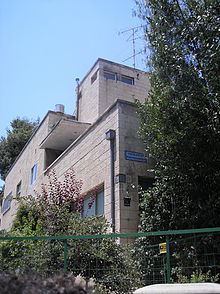
Beit Ussishkin
8. In 1923 he was elected president of the Jewish National Fund. He spearheaded major land acquisitions in the Hefer, Jezreel and Beit She’an valleys. A tireless fundraiser, he increased JNF’s income from 70,000 to 600,000 pounds and its properties from 22,000 to 561,000 dunams. In 1939, when JNF purchased land in the upper Galilee, a series of settlements were founded called Mezodot Ussishkin (Ussishkin Forts). Today, there is a Beit Ussishkin nature museum in Galilee.
9. As early as 1912, he had spoken at Hovevei Zion of the need for a Hebrew University and put through a resolution to allocate 50,000 gold francs for acquisition of land on Mount Scopus. He was there in 1925 at the inauguration of the university and sat on its Board of Trustees and Executive Council.
10. He died in Jerusalem in 1941 at the age of 78. He is buried in Nicanor’s Cave at the botanical gardens of the Hebrew University on Mount Scopus.
Tel Aviv’s Ussishkin Street is found near the old port.








May 22, 2013
12 Things You Need to Know About… Hayim Nachman Bialik
Israel’s National Poet
1. Bialik was born in the village of Radi in the Ukraine in January 1873. In 1880, his father died, and he was sent to Zhitomir to be raised by a stern grandfather. He had a traditional Jewish education, but was attracted to enlightenment ideas, which he explored on his own while attending a Talmudic academy in Lithuania.
2. At the age of 18 he went to Odessa, then the center of modern Jewish culture in the Ukraine. He studied Russian and German and earned a living by teaching Hebrew. He joined Hovevei Zion (Lovers of Zion) and was befriended by Ahad Ha’am (see my blog post of April 21), who influenced his Zionism. In 1892, his first poem was published – “El Hatzipor” (To the Bird), a lyric of longing for Zion. His first volume of poetry appeared in 1901, to great critical acclaim.
3. Following the Kishinev pogrom, he was commissioned by the Jewish Historical Society of Odessa to interview survivors. His famous poem “In the City of Slaughter” came out of that experience. It reflects the poet’s anguish at the absence of justice and the indifference of nature, but it also condemns the Jews who did not defend themselves. His bitterness against this passivity is said to have influenced the formation of Jewish self-defense groups across Russia. The degeneration of the Jewish nation in exile and the possibility of a new destiny became hallmarks of Bialik’s national poetry.
 4. He visited Palestine for the first time in 1909. He wrote to his wife, “The people regard me as someone worthy of respect, but I know that I am nothing, a nobody.”
4. He visited Palestine for the first time in 1909. He wrote to his wife, “The people regard me as someone worthy of respect, but I know that I am nothing, a nobody.”
5. With a group of friends, he established a Hebrew publishing house which issued classics and school texts. He, himself, translated into Hebrew such texts as Shakespeare’s Julius Caesar, Schiller’s William Tell, Cervantes’ Don Quixote, and poetry by Heine. In addition, he edited the poems of Ibn Gabirol (see my post of January 23) and of Moses ben Ezra.
6. With Y.H. Ravnitzky, he published The Book of Legends (Sefer HaAggadah, 1908-11), a 3-volume edition of the folk tales and proverbs scattered through the Talmud and midrashic literature. For him, this project was the ingathering of Jewish literature which he felt would lead to the development of a Jewish national consciousness.
7. Following the Bolshevik Revolution, he obtained permission to leave the country. He moved to Berlin, where he joined a group of well-known authors and publishers who met at the Cafe Monopol, which had a Hebrew-speaking corner. Bialik was a luminary among luminaries in Berlin, which was a center for Yiddish and Hebrew publishing in the early years after the first world war. In January 1923, Bialik’s 50th birthday was celebrated in the old concert hall of the Berlin Philharmonic, bringing together everybody who was anybody.
8. He founded the Dvir publishing house, which was later to put out the first scientific journal in Hebrew.
9. In 1924, he made aliyah and settled in Tel Aviv. He delivered the address that marked the opening of the Hebrew University in Jerusalem, and he served on its Board. In 1927, he became the head of the Hebrew Writers Union, a position he held for the rest of his life. On his 60th birthday, there were celebrations nationwide, and school children were brought to him to pay their respects.
10. Most of his poetry was written before 1908. In addition to nationalistic poetry calling for a reawakening of the Jewish people, he wrote love poems both tender and passionate, nature poems rich in imagery, and charming songs for children. In his personal poetry, he struggles with the conflicts of modernism, particularly his own ambivalence toward tradition vs. the enlightenment. His poetry is marked by a staggering array of Jewish sources, from the Bible, through Talmud and midrash, to medieval and modern poetry. He quotes, he paraphrases, he uses them in misplaced contexts. For example, his “Scrolls of Fire” (1905), a 9-section prose poem, weaves Talmudic legend, the Song of Songs, memories of a childhood fire, and an extramarital affair.
11. By writing in Hebrew, when it was far from clear that Hebrew would be the language of the Jewish community, he contributed significantly to the revival of the language. He pioneered free verse and prose poetry in modern Hebrew. He was always conscious – as storyteller, editor, publisher, translator, compiler and commentator – of forming a national identity.
12. He died in July 1934 of a heart attack while on a visit to Vienna. His poems have been translated into at least 30 languages and set to music. They are part of the education and culture of modern Israel. Here’s a link to a few of them:
http://poemsintranslation.blogspot.com/search/label/Bialik
Two streets in Tel Aviv are named after the poet – Bialik Street and Hen Boulevard. In addition, there’s Kiryat Bialik, a suburb of Haifa, and Givat Hen, a moshav bordering Raanana.








May 15, 2013
10 Things You Need to Know About… Moses ben Israel Isserles
Rabbi, Talmudist and Philosopher
1. Moses (Moshe) Isserles was born in February 1520 in Cracow, Poland, the son of a prominent, independently wealthy talmudist and grandson of Jehiel, Luria, the first rabbi of Brisk.
2. In 1550, he established a large yeshiva where the pupils could attend free, supported by his wealth. His teaching stressed simple interpretation of the Talmud, free of pilpul. He served as rabbi of Cracow for 22 years, becoming known across the Jewish world as an authority on Halachah.
3. He was learned, too, in Kabbala; and, like his intellectual forebear, Moses Maimonides, he studied history, astronomy and philosophy.
4. He is best known today as the author of HaMapah, which means “The Tablecloth” – so called because it’s a commentary on the compilation of Jewish law entitled the Shulchan Aruch, the set table.
5. The Shulchan Aruch was chiefly Sephardic in its orientation, based on Sephardi legal traditions. Isserles provided an Ashkenazic gloss based not only on law, but on customs of the Ashkenazim. He regarded custom (minhag) as the basis for his work.
6. Since 1578, editions of the Shulchan Aruch have included the HaMapah glosses.
7. Isserles is known, too, for Mechir Yayin, a philosophical treatment of the Book of Esther as an allegory of the struggle between the soul and the body, the spiritual and the sensual.
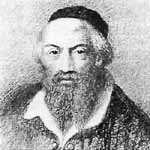 8. He died on Lag B’Omer in May of 1572, and was buried next to his synagogue. Written on his tombstone: “From Moses to Moses there was none like Moses” – the first Moses being Maimonides, the second Isserles.
8. He died on Lag B’Omer in May of 1572, and was buried next to his synagogue. Written on his tombstone: “From Moses to Moses there was none like Moses” – the first Moses being Maimonides, the second Isserles.
9. You might find him referred to as the Rema, an acronym for Rabbi Moses Isserles. His descendants include Felix Mendelssohn, Giacomo Meyerbeer and the statistician Leon Isserlis.
10. To his critics who thought his studies ranged too far afield from Torah and Talmud, he responded, “The aim of man is to search for the cause and meaning of things.”
Tel Aviv’s Isserles Street is found in Ramat Gan .








May 8, 2013
12 Things You Need to Know About… Haim Arlosoroff
He dealt with Nazis to save Jews – and may have died for it.
1. He was born in 1899 in Romny, Ukraine. He was known there as Vitaly (the Russian equivalent of Haim); in 1905, he became known as Viktor when, in the wake of pogroms, the family moved to Germany. Also, you might find his last name spelled Arlozorov.
 2. He studied economics at the University of Berlin, obtaining a doctorate there. While still a student, he began writing about Zionism. He became a leader of HaPoel HaTzair (Young Workers’ Party) and editor of “Die Arbeit.”
2. He studied economics at the University of Berlin, obtaining a doctorate there. While still a student, he began writing about Zionism. He became a leader of HaPoel HaTzair (Young Workers’ Party) and editor of “Die Arbeit.”
3. In 1919, he wrote “Jewish People’s Socialism.” Much like Borochov (see my blog post of April 10) he advocated a socialism that embraced a national consciousness. He believed that if the Jews had a national homeland, ancient Biblical practices could be incorporated into modern agriculture, including Sabbatical and Jubilee years.
4. In 1921, when visiting Palestine for the first time, he witnessed an Arab riot against the Jews. The experience led him to focus on Arab-Jewish relations. Recognizing the legitimacy of an Arab nationalist movement, he advocated strength-based compromise with the Arabs.
5. In 1923, at the age of 24, he was elected to the Zionist Action Committee at the Zionist Congress. By 1926, he was representing the Jews of Israel at the League of Nations in Geneva.
6. He seems to have had a flair for coming into conflict with other Zionists. When Arab riots broke out around the Western Wall in 1929, he criticized Jabotinsky (see my blog post of December 31) and the Betar movement for inciting the trouble. Repeatedly, he warned against trampling on the rights of Arabs.
7. 1930 found him working on the unification of the two socialist parties, Poale Zion and HaPoel HaTzair, into the new Mapai Labor Party. He became Political Director of the Jewish Agency, initially working with the British Mandatory government to help settle Jews in Palestine. His willingness to work with the British brought him into conflict with David Ben-Gurion.
 8. Among the Zionists, Chaim Weizmann was still his close friend. On April 8, 1933, at the King David Hotel, Arlosoroff organized a luncheon sponsored by the Jewish Agency and attended by Weizmann, Arab potentates and British leaders. The idea was to forge cooperative relations among the three groups. Not a popular move, it was much criticized by both radical Arabs and religious Zionists of the Mizrachi party.
8. Among the Zionists, Chaim Weizmann was still his close friend. On April 8, 1933, at the King David Hotel, Arlosoroff organized a luncheon sponsored by the Jewish Agency and attended by Weizmann, Arab potentates and British leaders. The idea was to forge cooperative relations among the three groups. Not a popular move, it was much criticized by both radical Arabs and religious Zionists of the Mizrachi party.
9. April 1933 also saw Nazi Germany implementing its first Jewish laws. Arlosoroff immediately directed his efforts to the plight of German Jewry. Now viewing the British Mandate as a stumbling block, he sought to cut a deal with Hitler’s henchmen for the mass transfer of Germany’s Jews and their assets. This was opposed by Jabotinsky, who believed an international boycott by Jews was the way to deal with Hitler. Arlosoroff visited Nazi Germany to negotiate the Ha’avara Agreement, which allowed for emigration of Jews to Palestine along with most of their property – though it did involve the export of German goods, for which Jews would receive the proceeds. It is estimated that ultimately over 60,000 Jews escaped the Nazis directly or indirectly through this agreement. In addition, about $100 million was transferred to the British Mandate, helping build infrastructure and purchasing land for Jewish settlements.
10. On the June 16, 1933, two days after his return from Germany, Arlosoroff was assassinated while walking with his wife along the beach in Tel Aviv. He was 34 years old. Upwards of a hundred thousand people are said to have attended his funeral. But who shot him? His right-wing nationalist critics were immediately suspect, having accused him of treason. Two men of the Zionist Revisionist faction, Abraham Stavsky and Ze’ev Rosenblatt, were arrested. Stavsky was convicted, but the conviction was overturned on appeal.

Magda Goebbels
11. The case has never been solved. In 1982, a judicial commission of inquiry, prompted by a bestselling book, concluded that neither Stavsky nor Rosenblatt had anything to do with the murder. Other theories that were floated at the time of Arlosoroff’s death identified the perpetrators as (1) two Arabs intending a sexual attack upon Arlosoroff’s wife; (2) a possible Soviet connection; and (3) agents of Joseph Goebbels, whose wife Magda had been close friends with Arlosoroff’s sister – it was thought the connection might have been an embarrassment to Goebbels, who in fact ordered his wife’s Jewish stepfather arrested and sent to a concentration camp.
 12. A monument eight feet tall commemorates the spot where Arlosoroff was killed. You’ll find it along the beachfront promenade near the Tel Aviv Hilton. Only yards away from it stands a memorial to the fallen warriors of the Irgun, on which you’ll find Stavsky’s name. Stavsky had gone on to rise within the ranks of the Irgun. It was he who procured the ship Altalena, and he died in the 1948 fight over it with the IDF .
12. A monument eight feet tall commemorates the spot where Arlosoroff was killed. You’ll find it along the beachfront promenade near the Tel Aviv Hilton. Only yards away from it stands a memorial to the fallen warriors of the Irgun, on which you’ll find Stavsky’s name. Stavsky had gone on to rise within the ranks of the Irgun. It was he who procured the ship Altalena, and he died in the 1948 fight over it with the IDF .
Are you an amateur sleuth of cold cases? You can find a summary of the police blotter at crankynotions.com/2012/02/27 chaim-arlosoroff-as-the-story-of-israel/. It’s in their February 2012 archive.








May 3, 2013
10 Things You Need to Know About… Israel Zangwill
British writer and humorist
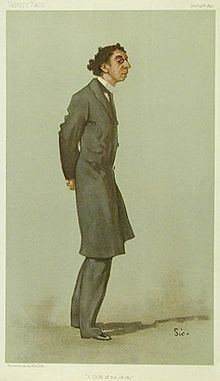 1. He was born in London in 1864 to Jewish immigrants from Russia. After attending a school for immigrant Jews, he went to the University of London, where he was awarded a BA with triple honors. He married a gentile feminist, Edith Ayrton.
1. He was born in London in 1864 to Jewish immigrants from Russia. After attending a school for immigrant Jews, he went to the University of London, where he was awarded a BA with triple honors. He married a gentile feminist, Edith Ayrton.
2. He championed the cause of the oppressed. He was an advocate for women’s suffrage and Jewish emancipation. He was both an assimilationist and a Zionist, an odd combination.
3. At the start of the 20th century, he was arguably the best-known Jew in the English-speaking world. His novel Children of the Ghetto: A Study in a Peculiar People (1892) was a runaway best-seller. With pathos, humor and great insight, it described the life of immigrant Jews in London’s East End, as well as of wealthier, assimilated Jews in the West End. Of course, it’s a tale of thwarted young lovers. Zangwill made it a play with the same title in 1899.
4. His play The Melting Pot advocated for the end of religious and racial differences, an end which he foresaw coming in the USA. The play was a hit when it opened in New York in 1909. That same year, it went to Washington, DC. Theodore Roosevelt, watching from his presidential box, leaned forward and shouted, “That’s a great play, Mr. Zangwill, that’s a great play.” Later, in a letter dated 1912, Roosevelt wrote to Zangwill that The Melting Pot would always be “among the very strong and real influences upon my thought and my life.” It was last produced in New York in 2006. Other plays by Zangwill included Merely Mary Ann, made into a movie in 1931 starring Janet Gaynor; Nurse Marjorie and The Serio-Comic Governess.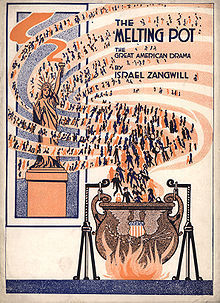
5. His The Big Bow Mystery was the first locked-room murder mystery ever and has been continuously in print since 1891. His fiction about Jewish life included Ghetto Tragedies, Ghetto Comedies and The King of Schnorrers, a picaresque novel of social satire. In addition, he wrote Dreamers of the Ghetto, evoking famous Jews, including Spinoza, Heine, and Ferdinand Lassalle. (Why I like doing this blog: who knew Lassalle was Jewish? Evidently, this German-Jewish socialist changed his name from Lassal to hide his ethnicity. Sure worked with me!) Far from hiding his Jewishness, Zangwill sometimes used Yiddish sentence structure in his writing.
6. He participated in a translation of the Mahzor into English and published a translation of the poetry of Ibn Gabriol (see my blog post about Ibn Gabriol, dated January 23.
7. Though he loved the idea of a melting pot, Zangwill was a Zionist. In December 1901, he wrote, “Palestine is a country without a people; the Jews are a people without a country.” (For the long history of this expression, and the interesting meaning of “without a people,” see Wikipedia)
8. In 1905, after the defeat of the Uganda Scheme, he broke with Zionism and founded the Jewish Territorialist Organization, with the aim of creating a Jewish homeland anywhere in the world–considering territories in Canada, Australia, Mexico, Mesopotamia and Cyrenaica. Ultimately, he worked with financier Jacob Schiff on the Galveston Plan, which brought 10,000 Jewish immigrants to the US between 1907 and 1914. At the end of his life, Zangwill believed Zionism would not work, both because the Arab presence in Palestine was an insuperable obstacle and because the British mandate gave the Jews no autonomy.
9. He died of pneumonia in 1926.
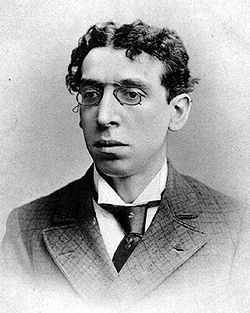 10. Some quotes from Zangwill:
10. Some quotes from Zangwill:
Everything changes but change.
No Jew was ever fool enough to turn Christian unless he was a clever man.
No, the real American has not yet arrived. He is only in the Crucible, I tell you – he will be the fusion of all races, perhaps the coming superman.
Fish was indeed the staple of the meal. Fried fish, and such fried fish! With the audacity of true culinary genius, Jewish fried fish is always served cold. The skin is a beautiful brown, the substance firm and succulent. Other delicious things there are in Jewish cookery – Lockshen, which are the apotheosis of vermicelli; Ferfel, which are lockshen in an atomic state; and Creplich , which are triangular meat pasties; and there is even gefullte Fisch, which is stuffed fish without bones – but fried fish reigns above all in cold, unquestioned superiority.








April 24, 2013
10 Things You Need to Know About… Ahad Ha’am
Cultural Zionist
1. He was born Asher Zvi Hirsch Ginsburg in Skvyra, near Kiev, in August 1856. His Hasidic parents were well-to-do, and he was raised and educated on a rural estate. Instructed only in religious subjects, he taught himself Russian, English, French and German.
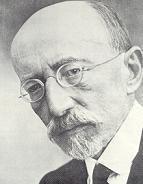 2. At the age of 33, he adopted the name Ahad Ha’am (one of the people) as a pen name for his first published article, “This is Not the Way,” an essay written in Hebrew.
2. At the age of 33, he adopted the name Ahad Ha’am (one of the people) as a pen name for his first published article, “This is Not the Way,” an essay written in Hebrew.
3. As a Zionist thinker, he opposed the major streams of Zionism–religious, political and socialist–in favor of a cultural Zionism. That is, instead of promoting an ingathering of Jews, he focused on the revival of Jewish life in the Diaspora. The establishment of a Jewish national home, he thought, ought to proceed slowly, through a small core of dedicated, talented people who would make Palestine a cultural center by reviving Hebrew language, literature, art, music and Jewish study.
4. This emphasis on Hebrew and Jewish culture came about in the wake of the failure of the first aliyah, when the new and impoverished Jewish settlements in Palestine either went under or were propped up by benefactors–but in any case were mostly ignored by Jewish communities in the Diaspora. Ahad Ha’am argued for the revival of Hebrew and Jewish culture. For a time he was editor of Hashiloah, a monthly Hebrew literary journal. He worked to build an audience for Hebrew literature at a time when Herzl was promoting German as the language for a Jewish state.
5. He was the first Zionist of importance to emphasize the darker side of the relationship with the Arabs. As a result of his first trip to Palestine, in 1891, he wrote that the land was not unoccupied, that the Arabs were not “stupid donkeys,” as some settlers maintained, and that dealing with them hostilely and cruelly was both wrong and foolish. He warned that the brutal treatment of the native people would sooner or later be revenged; worse, it would rob Zionism of its moral standing and legitimacy.
6. Starting in 1902, he worked for the Wissotzky Tea Company in Russia. In 1908, following another trip to Palestine, he moved to London to manage the Wissotzky office there.
7. A talented negotiator, he was a close advisor to Chaim Weizmann during the discussions with the British that culminated in the Balfour Declaration, legitimizing the idea of a Jewish homeland in Palestine.
8. The clarity and precision of his language made him an important Hebrew stylist, influencing modern Hebrew literature. His writings, translated into German, Russian, English and French, were widely read and influenced the ideas of modern thinkers, including Mordecai Kaplan.
9. He suffered from a debilitating insomnia. When, in 1922, he made aliyah and settled in Tel Aviv (on Ha’am Street, where else?) mayor Meir Dizengoff ordered the street closed off every afternoon so that Ha’am could nap without being disturbed by the noise of traffic.
10. He died in January 1927, and is buried in Tel Aviv’s Trumpeldor Cemetery.








April 17, 2013
10 Things You Need to Know About… Meir Bar-Ilan
Rabbi, scholar, and leader of religious Zionism
1. He was born Meir Berlin in 1880 in Volozhin, Lithuania.
2. He had impeccable yikhes: The family claimed connection to the House of David as descendants of Rabbi Meir Katzenellenbogen, the “Maharam of Padua.” His father, known as “the Netziv” (for Naftali Zvi Yehuda Berlin) was an orthodox rabbi, head of the Volozhin Yeshiva; his maternal grandfather was the famous rabbi Y.M. Epstein. He himself became a scholar of Talmud, studying at various yeshivas; he studied secular subjects at the University of Berlin.
3. In 1905, he joined Mizrachi, a religious Zionist movement that maintains the Torah is the center of Jewish nationalism. He represented Mizrachi at the 7th Zionist Congress, where, unlike most other Mizrachi delegates, he voted against the scheme to make Uganda the Jewish homeland.
 4. By 1911, he’d become Secretary of the world Mizrachi movement. He relocated to the USA in 1913, where he developed local Mizrachi groups and in 1914 chaired the first US Mizrachi convention, in Cincinnati. From 1914-28 he was President of US Mizrachi. In 1917 he founded the Mizrachi Teachers Institute.
4. By 1911, he’d become Secretary of the world Mizrachi movement. He relocated to the USA in 1913, where he developed local Mizrachi groups and in 1914 chaired the first US Mizrachi convention, in Cincinnati. From 1914-28 he was President of US Mizrachi. In 1917 he founded the Mizrachi Teachers Institute.
5. He coined the Mizrachi slogan, “The land of Israel for the people of Israel according to the Torah of Israel.”
6. During World War I, he was an active member of the Joint Distribution Committee and in 1916 served as Vice-President of the Central Relief Committee of New York City.
7. In the mid-1920s he moved to Jerusalem. 1925 saw him elected a member of the Jewish National Fund’s board of directors. He was founder and editor of Hatzofeh, a paper with a religious Zionist point of view that continued to be published until 2008. By the mid-1930s, Bar-Ilan had become a leading opponent of coöperation with the British authority. He opposed the partition plans put forth in 1937 and 1939, and he advocated active civil disobedience.
8. In all this political maneuvering, he did not forget scholarly pursuits. He was President of the Talmudic Encyclopedia and co-edited the first two volumes.
9. Upon the founding of the State of Israel in 1948, he organized a committee of scholars to examine legal problems of the new state in the light of Jewish law.
10. He died in 1949 in Jerusalem. In 1950, Bar-Ilan University was founded in Tel Aviv by the American Mizrachi movement.








April 10, 2013
10 Things You Need to Know About… Dov Ber Borochov
 1. He was born in the Poltava region of the Ukraine on July 4, 1881. His father had progressive views, and his parents’ home was a gathering place for Jewish intellectuals and writers, including Zionists. The town of Poltava was a place of exile for dissidents and revolutionaries. Ber Borochov met and was influenced by many of them.
1. He was born in the Poltava region of the Ukraine on July 4, 1881. His father had progressive views, and his parents’ home was a gathering place for Jewish intellectuals and writers, including Zionists. The town of Poltava was a place of exile for dissidents and revolutionaries. Ber Borochov met and was influenced by many of them.
2. Though he was educated in government schools and not in Hebrew, at the tender age of eleven, he tried to run away from home and make aliyah.
3. He was a Jewish Marxist. That is, he interpreted the “Jewish Problem” in class terms. He believed that because Jews were guests in any country, they could never have a normal class structure in the Diaspora; but in a Jewish state, a proletariat would come into being and take part in the class struggle. The emancipation of the Jewish people, he said, would be brought about by Jewish labor.
4. He believed that Arab workers and Jewish workers, having a common proletarian interest, would work together in this struggle.
5. In 1901 he joined the Russian Social Democratic Labor Party (which later split into the Bolsheviks and Mensheviks); two years later he was expelled from it when he formed a Zionist Socialist Workers Union in Yekaterinoslav.
6. He helped form and develop the Zionist labor party Poale Zion (Workers of Zion) and subsequently promoted it across Russia and Europe. From 1907-10 he edited the party’s newspaper, “The Free Words.” From 1914-17, now in the United States, he wrote for the Yiddish press and founded the World Union of Poale Zion.
7. In 1917, when the Social Democrats came to power in Russia, Borochov returned there to lead Poale Zion. His theories were widely influential in Eastern Europe, and he was on a speaking tour when, in December of the same year, he died of pneumonia in Kiev.
8. Along with Nachman Syrkin, he is considered the founder of socialist Zionism. His thinking formed the basis of the kibbutz movement.
9. 9 already! – and I haven’t even yet mentioned that Ber Borochov was a self-taught philologist, pioneering in the study of Yiddish. Unlike most of his fellow Zionists, he promoted the importance of the mother tongue, calling it “a unique living organism, unbound in its creative freedom.” He is considered the founder of modern Yiddish studies.
10. Father of both Labor Zionism and Yiddish studies – not bad for a guy who died at age 36! In 1963, his remains were transferred from Russia to Kibbutz Kinneret in Israel.








April 3, 2013
12 Things You Need to Know About… Chaim Azriel Weizmann
1. He was born in November 1874 in a village near Pinsk, the third of fifteen children. He studied chemistry in Germany and Switzerland, receiving a doctorate with honors in 1899.
2. He taught at the University of Geneva and then, in 1904, became a lecturer at the University of Manchester, in England, where he remained for thirty years. He settled in England and became a British subject in 1910. The MP representing his district was Arthur Balfour.
3. A committed Zionist, he missed the first congress in 1897 because of travel difficulties, but made it to all the others. Beginning in 1901, he promoted the establishment of an institution of higher learning for Jews in Palestine. His efforts (among those of others, including Martin Buber) led to the founding of the Technion in 1912.
4. In 1907, Weizmann visited Palestine for the first time. While there, he helped organize the Palestine Land Development Company as a practical means to pursue Zionist dreams.
5. Weizmann worked throughout his life as a chemist. He developed a process to produce acetone through bacterial fermentation. Acetone was used in the manufacture of cordite explosive propellants, so when the Great War came, he was asked by Winston Churchill and David Lloyd George to develop an industrial process for its production. This he did, and speedily; and from 1916-19 he served as director of the laboratories of the British Admiralty. Offered a reward or title for this important work, which was vital to the Allied war effort, he is said to have replied, “There is only one thing I want – a national home for my people.”
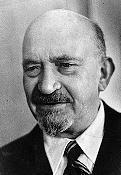 6. When Arthur Balfour (then Foreign Secretary) asked him if there were many Zionists like him, he answered, “The roads of Pinsk are paved with them.” In 1917, as president of the British Zionist Federation, he negotiated with Balfour for what would become known as the Balfour Declaration, written in the form of a letter to Baron Walter Rothschild. It said the British government “views with favor the establishment of a national home for the Jewish people.” While the British had many reasons for making this declaration, there is no doubt about Weizmann’s key role in it.
6. When Arthur Balfour (then Foreign Secretary) asked him if there were many Zionists like him, he answered, “The roads of Pinsk are paved with them.” In 1917, as president of the British Zionist Federation, he negotiated with Balfour for what would become known as the Balfour Declaration, written in the form of a letter to Baron Walter Rothschild. It said the British government “views with favor the establishment of a national home for the Jewish people.” While the British had many reasons for making this declaration, there is no doubt about Weizmann’s key role in it.
7. In 1918 he headed a Zionist commission sent by the British government to Palestine to advise on future development. He was among the founders who laid the foundation stone for Hebrew University in July of that year. As if that weren’t enough, he met with Emir Feisal in Aqaba to discuss the founding of an independent Jewish state – and won his assent to Jewish immigration into Palestine, with protection of Arab rights. In 1919 he represented Jewish interests at the Paris Peace Conference ending World War I.
8. In 1920 he became leader of the World Zionist movement, a position which he held until 1931 and again 1935-46. He promoted a Zionism based not on the suffering of Jews in Easter Europe and elsewhere, but instead on the yearning of the Jewish people everywhere for a national center and a national life in their homeland. He supported both grass-roots and high-level diplomatic efforts toward these ends.
9. He continued to work as a scientist. In 1934, his efforts led to creation of a research institute in Rehovot, eventually named in his honor. He settled in Rehovot in 1937 and did research there in organic chemistry. During the Second World War he worked with the British toward the establishment of the Jewish Brigade.
10. In 1936, along with David Ben-Gurion, Weizmann had accepted the idea of partitioning Palestine – establishing a Jewish state alongside an Arab state; he was instrumental in the adoption of the partition plan by the United Nations in November 1947 and in the recognition of Israel by the United States in May 1948.
11. In June 1949 he became a citizen of Israel. He was the first president of the State of Israel, serving until his death from respiratory inflammation in November 1952.
12. He said, “A state cannot be created by decree, but by the forces of a people and in the course of generations. Even if all the governments of the world gave us a country, it would only be a gift of words. But if the Jewish people will go build Palestine, the Jewish state will become a reality – a fact.”
Want to know more?
Read Weizmann’s autobiography, Trial and Error, written in 1949.
See the video “The Vision of Chaim Weizmann” in the Steven Spielberg Archive on YouTube.









